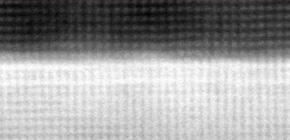
Ultra-energy-efficient magnetic memory by controlling the shapes of atoms
A research group led by Osaka University discovered a new principle to realize ultra-energy-efficient magnetic memory by electrically controlling the shapes of atoms
Non-volatile magnetic memory using nanometer-sized magnets, MRAM (magnetoresistive random access memory), required magnetization reversal by applying voltage. Thus, ultra-energy efficient magnetization reversal in nanoseconds is preferable. However, figure-of-merit of the current technology, voltage-controlled magnetic anisotropy (VCMA), was less than one-tenth of the level necessary for application. It is important to develop the VCMA effect using the new materials.
Associate Professor Shinji MIWA at Osaka University, Dr. Motohiro SUZUKI at the Japan Synchrotron Radiation Research Institute, Assistant Professor Masahito TSUJIKAWA at Tohoku University, Dr. Takayuki NOZAKI at the National Institute of Advanced Industrial Science and Technology, and Dr. Tadakatsu OHKUBO at the National Institute for Materials Science, made a platinum monatomic layer placed on ferromagnetic iron (FePt|MgO system) that was controlled at an atomic level. (Figure 1 Left)
Since there is correlation between a spin-orbit interaction and a VCMA, this group focused on FePt|MgO, which contains platinum with large spin-orbit interactions. Using the FePt|MgO, this group conducted experiments in order to clarify the VCMA at X-ray beamlines in the SPring-8 synchrotron radiation facility. (Figure 1 Right)
From these experiments and theoretical calculations, this group discovered that the FePt|MgO system that demonstrated a VCMA of 140 fJ/Vm had two different mechanisms and potentially possesses an enormous VCMA beyond 1,000 fJ/Vm. (Figure 2)
This group observed changes in magnetic dipole term by voltage in the experiment at SPring-8. From theoretical calculations, it was found that, in the FePt|MgO system, the VCMAs from conventionally known Mechanism A (the orbital magnetic moment inductino) and newly discovered Mechanism B (magnetic dipole term inductino) were partially cancelled out by one another, resulting in a VCMA of 140 fJ/Vm.
As shown in Figure 2, Mechanisms A and B have a VCMA value of 1,000 fJ/Vm or more, so designing materials to create a synergistic effect will allow development of materials with a VCMA of 1,000 fJ/Vm or more.
The use of this group’s achievements in designing materials will make it possible to obtain a VCMA of 10 times larger than that of existing materials, which will allow for energy-saving non-volatile memory that can reduce heat generation.

Figure 1. (Left) Transmission electron microscopy image. We prepared FePt nanoscale magnet which is atomically controlled. (Right) We applied external voltages to sample and performed synchrotron X-ray absorption experiment. (Credit: Osaka University)

Figure 2. Voltage control magnetic anisotropy is 30 fJ/Vm in Fe-MgO system, and that of FePt is 140 fJ/Vm. In this study, we find that voltage controlled magnetic anisotropy in FePt system possess two mechanism. We also find that FePt potentially possess voltage controlled magnetic anisotropy coefficient more than 1000 fJ/Vm. (Credit: Osaka University)

Figure 3. Voltage controlled magnetic anisotropy of FePt nanomagnet opssess two mechanism. Well known mechanism A can be described by charge doping, and it can be confirmed by measuring orbital magnetic moment. New mechanism B can be described by charge redistribution, and it can be confirmed by measuring magnetic dipole moment. (Credit: Osaka University)
To learn more about this research, please view the full research report entitled " Voltage controlled interfacial magnetism through platinum orbits " at this page of the Nature Communications website.
Related link
